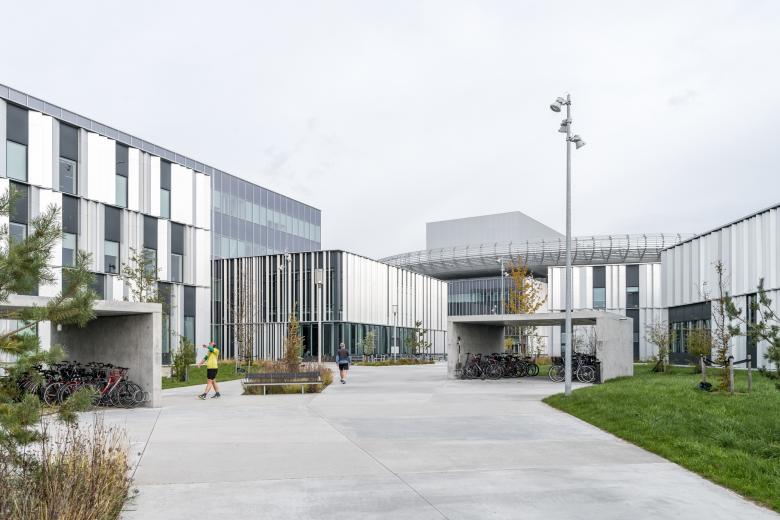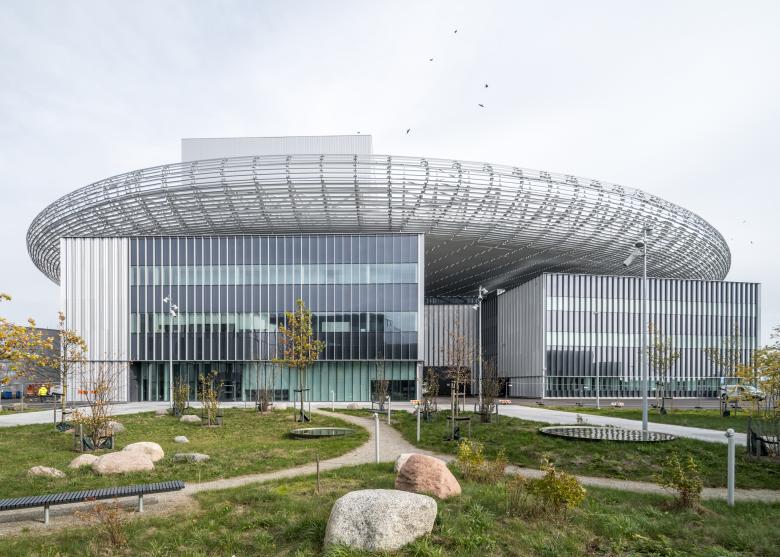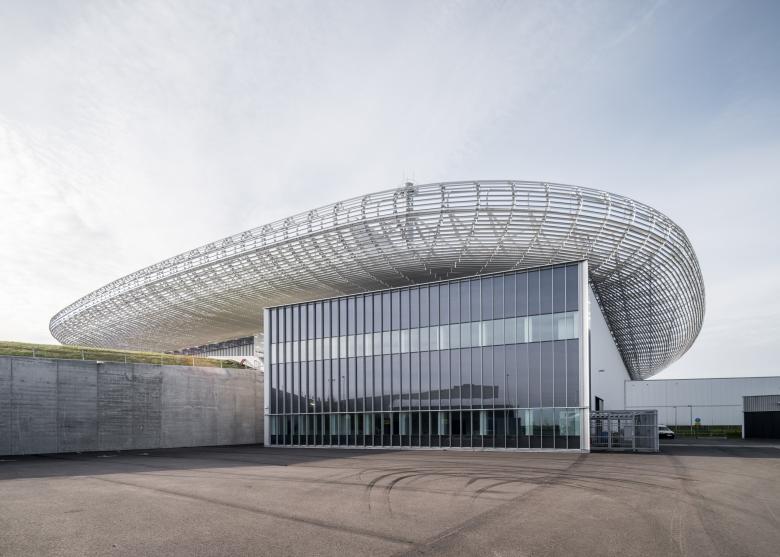A team of Danish architects and landscape architects has completed the European Spallation Source in Lund, Sweden, a campus that aims to “advance material research for science and innovation.”
The European Spallation Source (ESS) can produce neutrons, which are generated through spallation, to study the atomic and molecular structure of materials. The main component of the ESS campus in Lund, in southern Sweden, is a proton accelerator that fires a high-energy proton beam at a target. When the protons hit the target, they cause the atoms to break apart — the spallation — producing a shower of neutrons which are directed towards the instruments.
The accelerator is housed in an underground tunnel, while another technical apparatus, the “klystron gallery,” disguised beneath a berm of soil, sits above the accelerator, visible only as a wall on one side. On the other side, the building blends into the landscape. The architecture parlante is a metaphor for spallation: The layout of the complex replicates the process, with a landscaped proton accelerator, a circular target roof, and scattered facility buildings.
The campus was designed by a trio of Danish firms: Henning Larsen from Copenhagen, COBE from Nordhavn, and the landscape firm SLA, also based in Copenhagen. The architecture of the campus prioritizes a “sense of community,” per the team, to create a collaborative learning environment. They envisioned a “village for a community of scientists” that allows visiting researchers to meet indoors and outdoors. Prioritizing the experience of scientists was a priority for the design, such that people, nature, and science are interconnected. Spaces encourage the creation of smaller communities because, the team asserts, “social life increases creativity and enables greater research.”
The point of orientation is the circular roof above the target hall, home to the tungsten wheel. The roof’s large, rounded structure is a lightweight construction that lets light into the hall and withstands snow in winter. All buildings are monolithic, like objects of land art in the landscape. Each building varies in size and function and they are positioned without a strict grid. Some volumes are solitary while others are clustered. The facades reflect the purposes of the buildings, from industrial to refined. The welcome spaces and offices, auditoriums, and laboratories are more refined, while the accelerator, target room and halls have industrial facades.
ESS is designed as a campus of scattered buildings in a lush, recreational landscape. The campus encourages movement in, around and between buildings, and it visually opens up to its surroundings to give the public a peak inside. SLA's landscape design provides pathways for walking and jogging along rainwater ponds, and meadows, marshes, and wetlands for rainwater management. A fenceless landscape with sunken ha-has keeps the campus secure while not compromising visual openness. The landscape should make the land-art character of the ESS grow more distinct over time.




